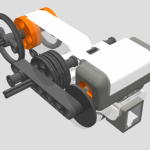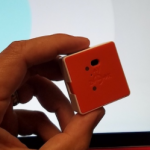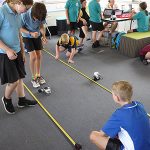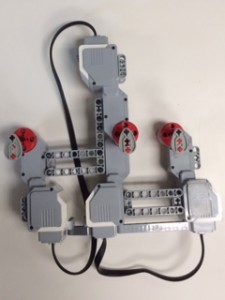
One of the most important topics of engineering and design is losses.
In many classes, we ignore losses (such as friction) to simplify problems while learning the physics of engineering. But when we solve real life engineering problems, we need to be aware that losses are always present and are a big factor in design.
In this experiment, students will be able to see evidence of losses in a system.
Lesson features:
- Class discussion of different energy losses
- Building and testing a chain of motors
- Visualize the proportional amount of energy loss
By connecting two motors to each other with an EV3 cable, you can demonstrate that manually turning one motor powers the other. Now consider what happens if we take a second pair of motors and join it to the first to create a chain of motors as shown in the photo.The shafts of the middle two motors are joined with connector pins and/or an axle.
Manually turning the first motor powers the second. That motor then turns the third motor, which powers the last motor. We might expect all the motors to be rotating at the same speed and power, but that is not what we find, as losses exist in the system. The losses can be seen as you follow the path of motors. The first motor rotates one full revolution, the second motor rotates about 20% of a revolution, and the last motor rotates about only 10% of a revolution. This reduction of rotations (and energy) demonstrates the losses in the system. Some major losses in this system include friction in the motors and electrical resistance in the cables.
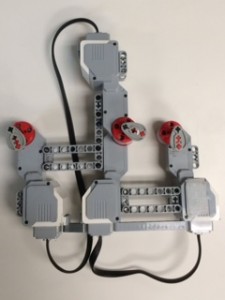
This experiment is also reversible. If the students predict that maybe the reduction of rotations is unidirectional, you can drive the opposite motor to demonstrate that the friction affects the system the same way no matter the direction.
CEEO
Latest posts by CEEO (see all)
- Chair for Mr Bear - 21 August 2020
- Assistive Technology: Making Lives Easier - 20 August 2020
- Sturdy Tower - 14 June 2020
- Going the Distance - 21 May 2020
- GPS accuracy testing with LEGO bricks - 10 September 2015
